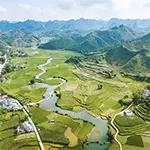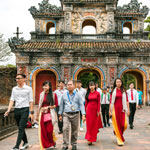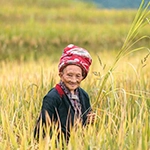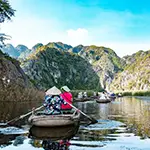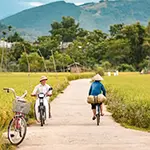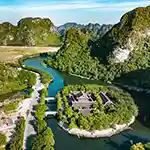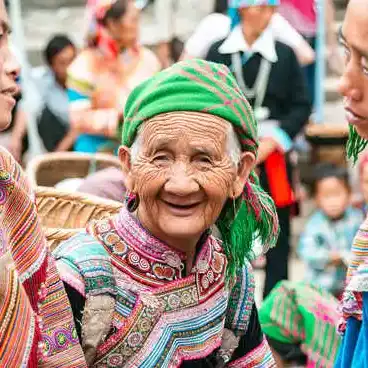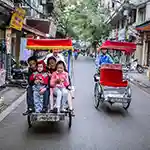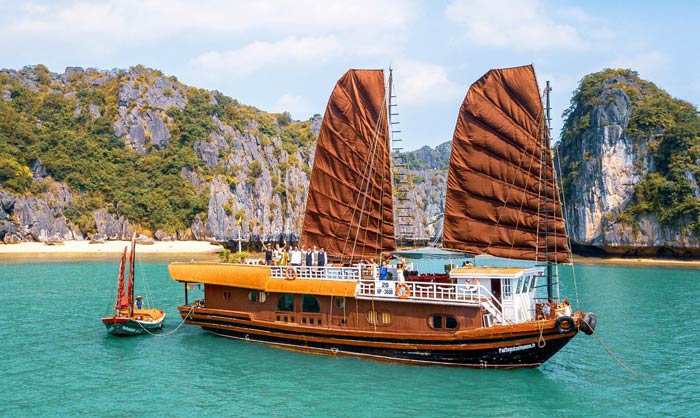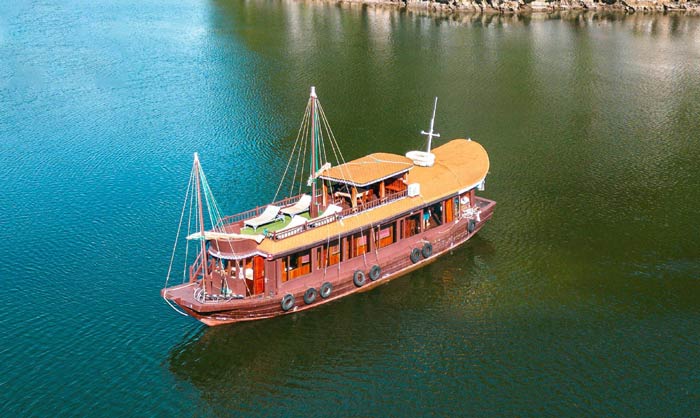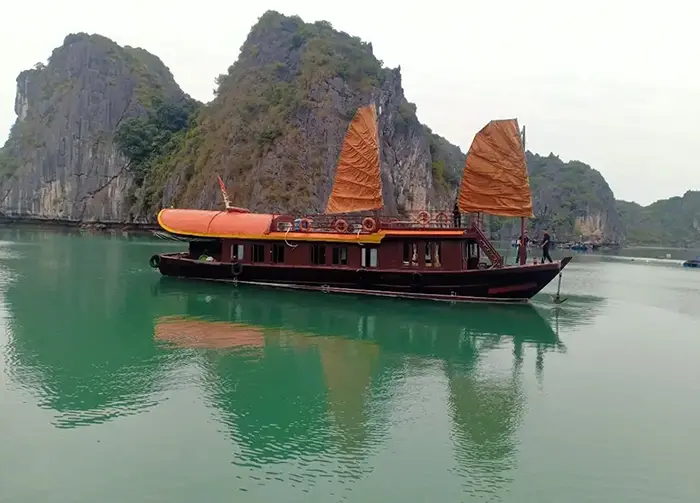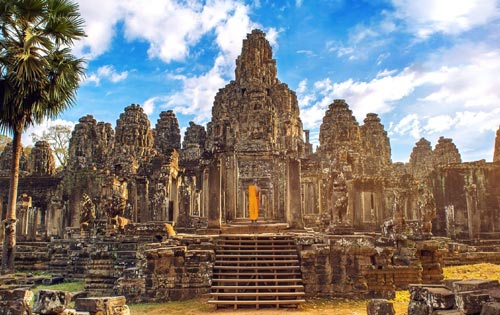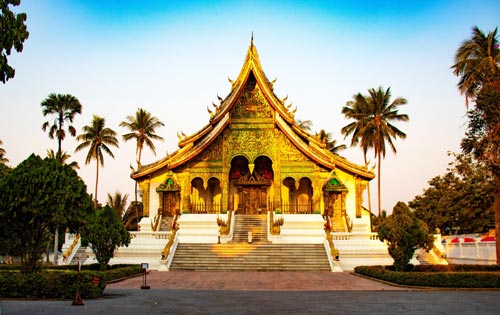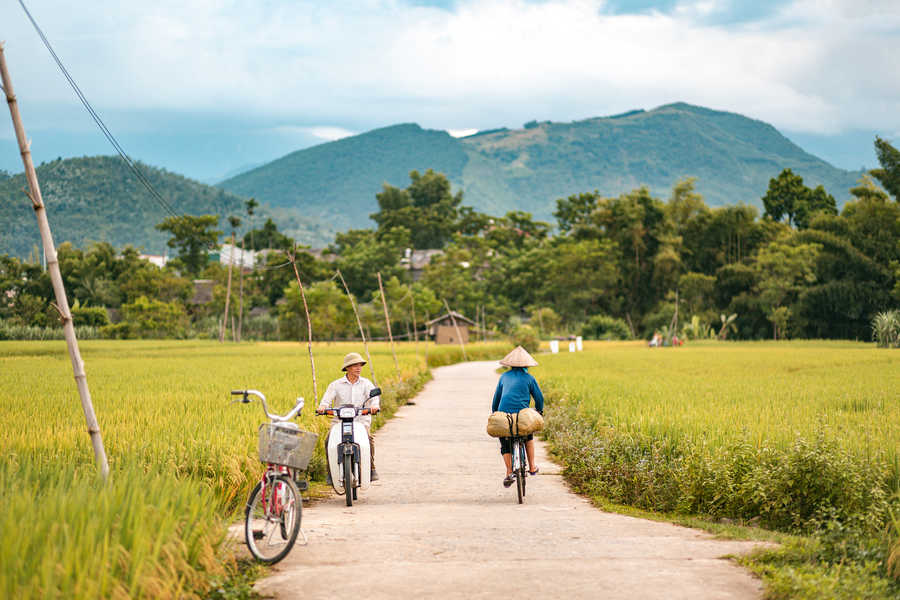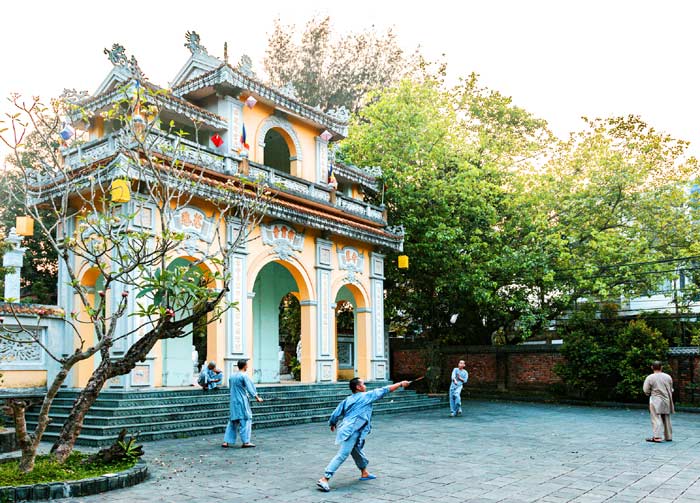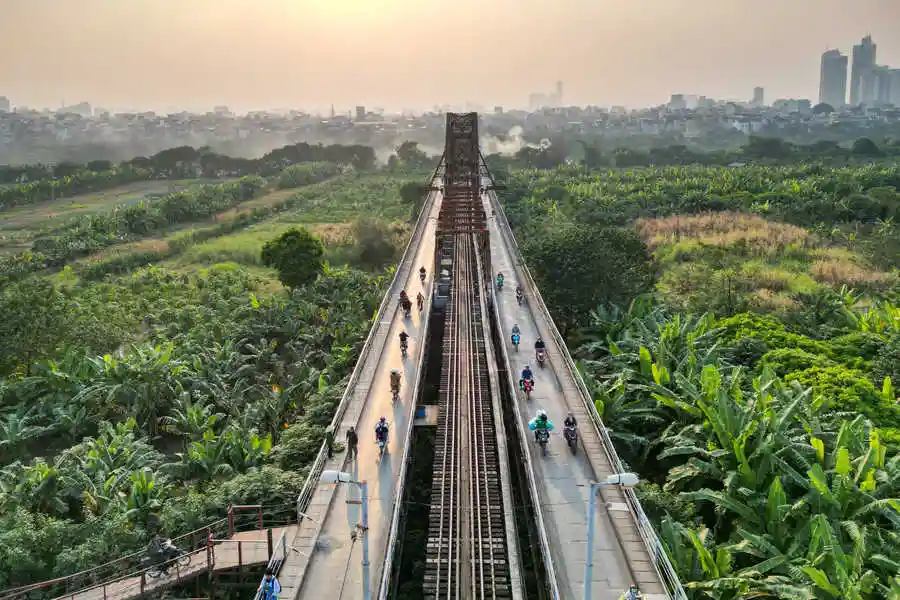・Vietnam Cambodia Tour Package・
Our Best Vietnam and Cambodia Tour Packages
Combine Vietnam and Cambodia in a single journey for a rich and varied discovery of Southeast Asia. From Halong Bay to the temples of Angkor, passing through Hanoi, the Mekong Delta, and Phnom Penh, these tours take you to the heart of spectacular landscapes and major cultural sites.
We have designed several itineraries to help you explore these two destinations in a balanced way, taking the time to enjoy each stage. Whether you are looking for a classic highlights tour, an off-the-beaten-track immersion, or a journey focused on culture and local encounters, you will find suggestions here to match your travel style.
Discover our combined Vietnam–Cambodia tours below and customize them to your preferences for a tailor-made journey.

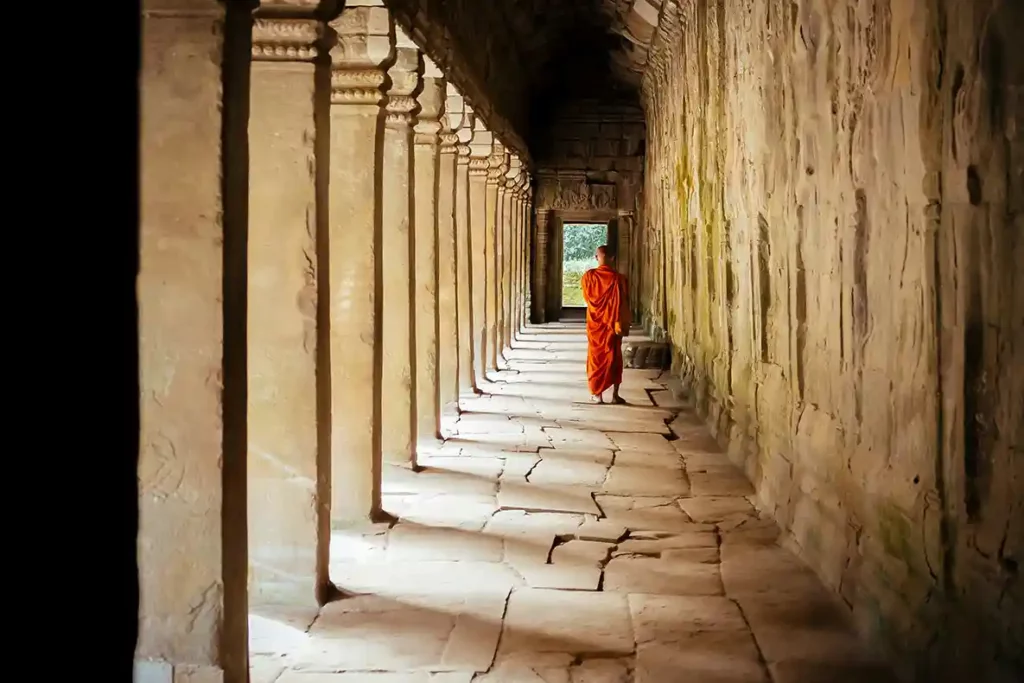
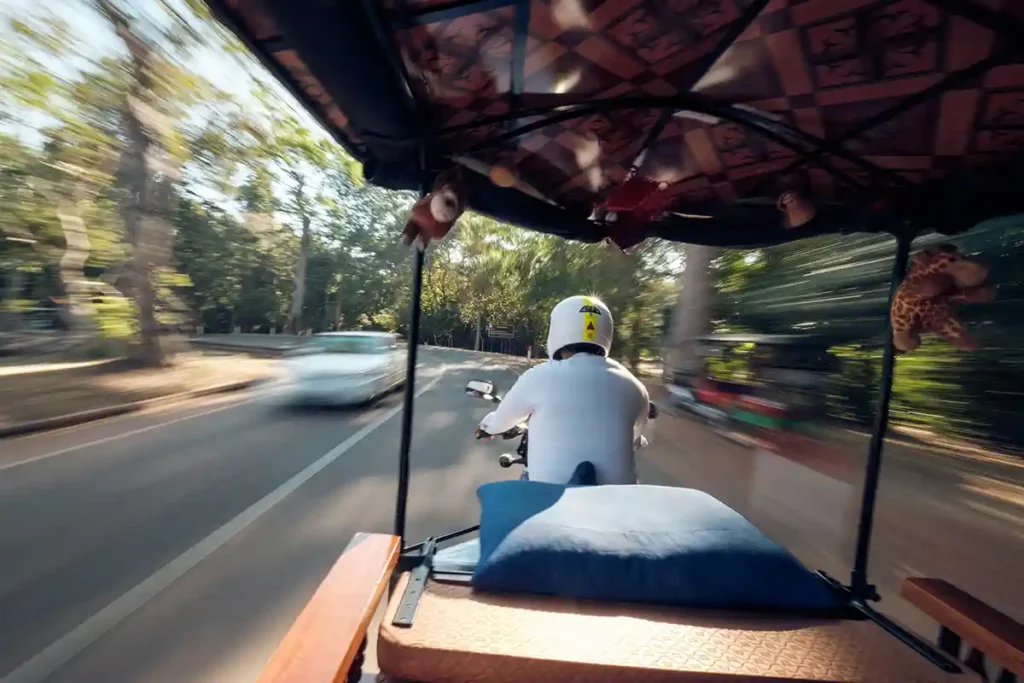
Our Vietnam and Cambodia tour ideas to customize
To explore Vietnam and Cambodia in a single journey, we offer itineraries designed to combine cultural discoveries, breathtaking landscapes, and local immersion. From Halong Bay to the temples of Angkor, through the northern rice terraces and the floating villages of the Mekong, each tour can be personalized according to your wishes.
Discover our suggestions and adapt them to create a tailor-made journey, at your own pace and according to your interests.
This 20-day tour takes you to the unmissable treasures of Vietnam and Cambodia, combining major cultural sites, breathtaking landscapes, and authentic local immersion.
Starting from vibrant Hanoi, you will explore Northern Vietnam, from Halong Bay to the mountains of Sapa and the rice fields of Ninh Binh, before heading to the cultural gems of Central Vietnam, with Hue, Hoi An, and the Da Nang coastline. The journey continues south with the bustling energy of Ho Chi Minh City and the tranquility of the Mekong Delta, before crossing into Cambodia to discover Phnom Penh and the fascinating temples of Angkor.
A balanced and varied itinerary, perfect for exploring the highlights of Vietnam and Cambodia while enjoying moments of escape and authentic encounters.
Vietnam and the Must-Sees of Cambodia in 20 Days: Lan Ha Bay, Mu Cang Chai, Hoi An, Mekong, Phnom Penh, and Angkor
This tour is specially designed for families, combining fun, discovery, and comfort. You will enjoy a varied program that takes you through the spectacular landscapes of Halong Bay, the mountains and rivers of Ninh Binh, the rich history of the imperial city of Hue, and the timeless charm of Hoi An. Each stop includes fun and educational activities so that children can learn while having fun, such as boat rides, visits to local markets, and craft workshops.
To avoid long journeys, we have selected transport options suitable for the whole family, including a train ride between Hanoi and Hue for a pleasant and immersive adventure. Accommodations are carefully chosen for their comfort and warm hospitality, tailored to the needs of families with children.
Travel with confidence alongside our French-speaking guides who will accompany you throughout this journey. Together, we will make sure every family member fully enjoys this exceptional adventure in Vietnam and Cambodia.
Vietnam and Cambodia Family Tour in 18 Days: Lan Ha Bay Cruise, Angkor Temples, Craft Workshops, Floating Market and Fun Discoveries
Looking to plan a private, tailor-made journey?
For those with less time, this tour still allows you to explore living vestiges of the past by visiting emblematic sites that reflect the cultural and spiritual richness of both countries.
Your adventure begins in Hanoi, a vibrant capital where the marks of millennial Vietnam coexist with colonial heritage. Following a north-to-south itinerary, you will travel through landscapes as diverse as they are spectacular: the karst peaks of Ninh Binh, the imperial palaces and tombs of Hue, the ancient town of Hoi An, and the bustling Ho Chi Minh City, constantly evolving.
You will then cross into Cambodia to explore Phnom Penh, a capital steeped in history, before ending on a high note with the discovery of Angkor Temples, the majestic jewels of Khmer civilization.
Between colonial heritage, imperial relics, living traditions, and natural wonders, this 20-day journey promises a complete and unforgettable immersion in the heart of Vietnam and Cambodia.
Treasures of Indochina in 14 Days: From Hanoi to Angkor, Discover Hoi An, Hue, Ho Chi Minh City, the Mekong, and the Temples of Angkor.
Explore Northern Vietnam and the wonders of Angkor in 12 days, a journey blending nature, history, and cultural immersion. From Hanoi to the rice fields of Pu Luong, through the karst landscapes of Ninh Binh and the shimmering waters of Halong Bay, this itinerary takes you to the heart of Vietnam’s most iconic scenery.
After this Vietnamese interlude, head to Cambodia and the temples of Angkor, the grandiose remains of the Khmer Empire. Over two days, explore the majestic ruins of Angkor Wat, Bayon, and Ta Prohm, before concluding your journey with a cruise on Tonlé Sap, where floating villages and scenes of local life offer a final striking glimpse of this fascinating region.
An ideal tour to combine unspoiled nature with ancient heritage, between Vietnam and Cambodia.
Northern Vietnam & Angkor in 12 Days: Pu Luong Rice Terraces, Halong Bay, Angkor Temples, and a Tonlé Sap Cruise for a Total Immersion
Our answers to your questions
Why choose a Vietnam and Cambodia tour?
A combined Vietnam and Cambodia tour allows you to discover two countries with complementary cultural and natural treasures. From Vietnam, with its spectacular landscapes like Halong Bay, dynamic cities, and imperial heritage (Hue, Hoi An), to Cambodia, home to the temples of Angkor and unique Khmer traditions, each stage offers a captivating immersion.
Blending iconic sites, nature, and history, this journey ensures a varied and enriching discovery of the former Indochina.
When to travel to Vietnam and Cambodia?
The best time for a Vietnam and Cambodia tour is from November to April, with dry and pleasant weather. Northern Vietnam is ideal in spring and autumn, while the central and southern regions offer favorable conditions in winter. Cambodia can be visited year-round, but it’s best to avoid the rainy season from June to October to fully enjoy the temples of Angkor.
What budget should you plan for a private tour in Vietnam and Cambodia?
The price of a private tour with private transport and French-speaking guides varies depending on the number of travelers. For 2 people, expect between $110 and $165 per day for a quality service with 3-star hotels. The rate will increase depending on the level of comfort you choose.
We can also adjust the budget by opting for shared transportation, such as tourist buses for trips to Halong or Ninh Binh, or within Central Vietnam.
Our agency customizes every trip according to your expectations. Tell us about your wishes through this form, and we will send you a detailed quote.

